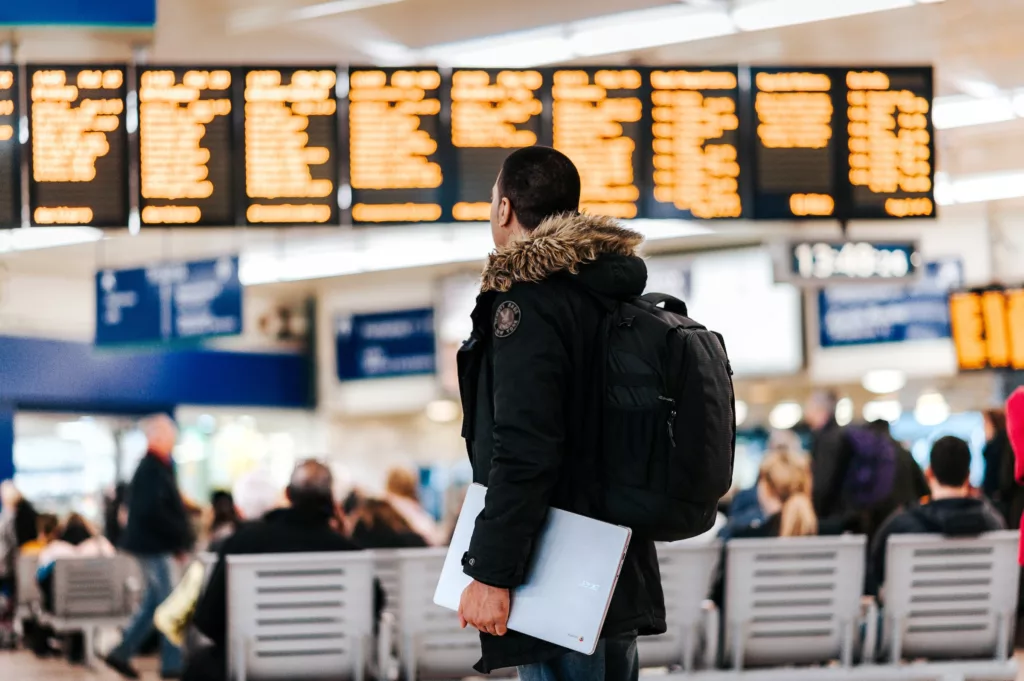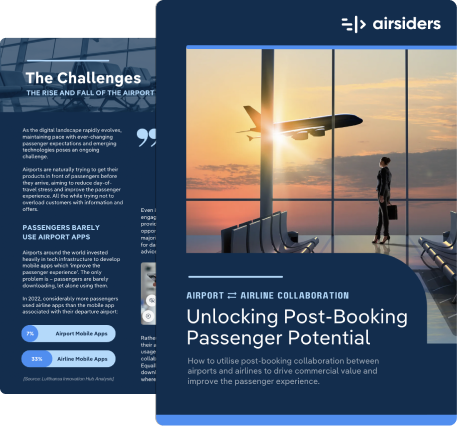Maximizing Airport Revenue Streams Through Virtual Interlining
In 2024, airports stand at the cusp of a transformative opportunity with virtual interlining, a concept that's reshaping how global networks are built and utilized.
Unshackled from traditional codeshare agreements with cumbersome and expensive airline partnerships, virtual interlining is a not just a good idea for airports - it should largely be seen as a value-add no-brainer in the ever-changing scope of airport travel, where passengers frequently require flight hops to small and large airports across the world and naturally expect their bags to make it through the journey with them.
Why Strategic Expansion through Connectivity is the Key to Airport Success
Unlike traditional interlining, which requires formal agreements between airlines to share flights and passengers, virtual interlining leverages digital technology to seamlessly connect flights from different carriers without the need for such agreements.
This innovation opens the door to an array of benefits, most notably the ability to attract a broader spectrum of airlines and travelers seeking flexible and efficient travel options. That's a good thing.
Virtual Interlining (VI) literally opens up parts of the globe that were once deemed 'too far off the beaten track'. Airports live and die by innovation, so why should VI be treated any differently? Airports should not feel constrained by geography. The technology is here and it's already making waves in the aviation world.
Building Global Networks: Why VI Works Better Than Traditional Alliances
The essence of virtual interlining lies in its capacity to create a global network that surpasses the limitations of existing airline alliances.
By facilitating easier connections between airlines, airports can dramatically enhance their appeal as travel hubs. This not only increases the volume of carriers operating through the airport but also positions it as a preferred choice for international travelers.
The broader the network, the more attractive the airport becomes, fostering an environment ripe for growth and expansion.

Partnerships for Progress
The implementation of virtual interlining is made possible through strategic partnerships with technology providers like Airsiders.
These alliances are foundational, enabling airports to integrate sophisticated digital systems that manage the complexities of connecting passengers and their luggage across different airlines.
Such collaboration not only simplifies operational challenges but also acts as a catalyst for digital transformation within the airport ecosystem.
How to Achieve Revenue Growth via Increased Passenger Volume
With the influx of passengers facilitated by enhanced connectivity, airports find themselves in a prime position to capitalize on ancillary revenue streams. The following should be considered by airport operators in the consideration of a virtual interlining technology:
- Leverage Ancillary Services
The key here is diversification—expanding retail, dining, and other services to cater to the unique needs of transit passengers.
From luxury shopping experiences to gourmet dining options, the goal is to create an environment where passengers are encouraged to spend more time and money.
- Create Efficient Use of Airport Resources
Virtual interlining also promotes the efficient use of airport resources. By optimizing the scheduling and management of gates, lounges, and baggage systems, airports can handle the increased passenger flow without compromising on service quality.
This efficiency not only reduces operational costs but also contributes significantly to the airport's profitability.
- Embrace Automation
Automated baggage systems, biometric boarding processes, and digital navigation aids are just a few examples of how technology can streamline operations and enhance the passenger experience.
For airports embracing virtual interlining, these innovations are not just beneficial; they are essential for managing the complexities and volumes that come with it.
- Use Data Analytics to Help Guide Strategic Decisions
In an era where data is king, airports can leverage analytics to make informed decisions about infrastructure investments and service enhancements.
Understanding patterns in travel behavior, passenger preferences, and operational bottlenecks allows for a strategic approach to development, ensuring that airports remain agile and responsive to the needs of both airlines and travelers.
- Enhance Sustainability via Operational Efficiency
Sustainability is a critical consideration for the modern airport. Virtual interlining contributes to this goal by optimizing flight connections, thereby reducing unnecessary layovers and the associated carbon emissions.
Beyond the air, airports are investing in sustainable infrastructure—think renewable energy sources and electric ground handling equipment—to further reduce their environmental impact.

Elevating the Passenger Experience
At the heart of virtual interlining is the promise of a seamless travel experience. By reducing the stress and uncertainty associated with transfers, airports can significantly improve passenger satisfaction.
This is further enhanced by digital services that provide real-time information, helping passengers navigate through the airport with ease. Personalization plays a crucial role here, with tailored services and experiences designed to meet the unique needs of each traveler.
VI: A smarter direction for Airports
Virtual interlining stands as a beacon of innovation for airports, offering a pathway to increased connectivity, revenue growth, and operational efficiency.
By embracing this model, airports can not only enhance their value proposition to airlines and passengers but also position themselves as leaders in the evolving landscape of air travel.

The 10 Main Takeaways to Keep in Mind
As this article has laid out, there are a number of important factors at play when we consider the importance and impact of VI on airport operations:
1.Build Global Networks
- VI facilitates connections across various airlines, including non-alliance members.
- VI attracts more carriers and international travelers seeking flexible routes.
2. Create Partnerships for Progress
- Essential for digital infrastructure support.
- Streamlines passenger and baggage transfers across carriers.
3. Leverage More Ancillary Services
- Diversify retail and dining to boost non-aeronautical revenue.
- Introduce services tailored to transit passenger needs.
4. Ensure Efficient Use of Airport Resources
- Optimize gates, lounges, and baggage systems.
- Enhance operational efficiency and reduce costs.
5. Innovation for Future Readiness via Automation
- Automated technologies for baggage and boarding processes.
- Essential for managing increased flow from virtual interlining.
6. Data Analytics for Strategic Decisions
- Guide infrastructure investments and service enhancements.
- Ensure adaptability and competitiveness.
7. Enhance Sustainability and Operational Efficiency with Sustainable Practices
- Promote direct connections and reduced layovers for fuel efficiency.
- Invest in green technologies and sustainable infrastructure.
8. Community and Environmental Advantages
- Support global sustainability objectives.
- Enhance the airport's reputation among eco-conscious stakeholders.
9. Streamlining the Journey
- Virtual interlining for smoother transfers.
- Comprehensive digital services for real-time information.
10. Personalization at Every Step
- Analyze passenger data for tailored services.
- Enhance satisfaction and encourage loyalty.
Can we help?
If you want to speak to one of our experts in Virtual Interlining tech, we would be happy to show you how you can transform your airport into a global connection hub. Contact us here.
Back to all articles
